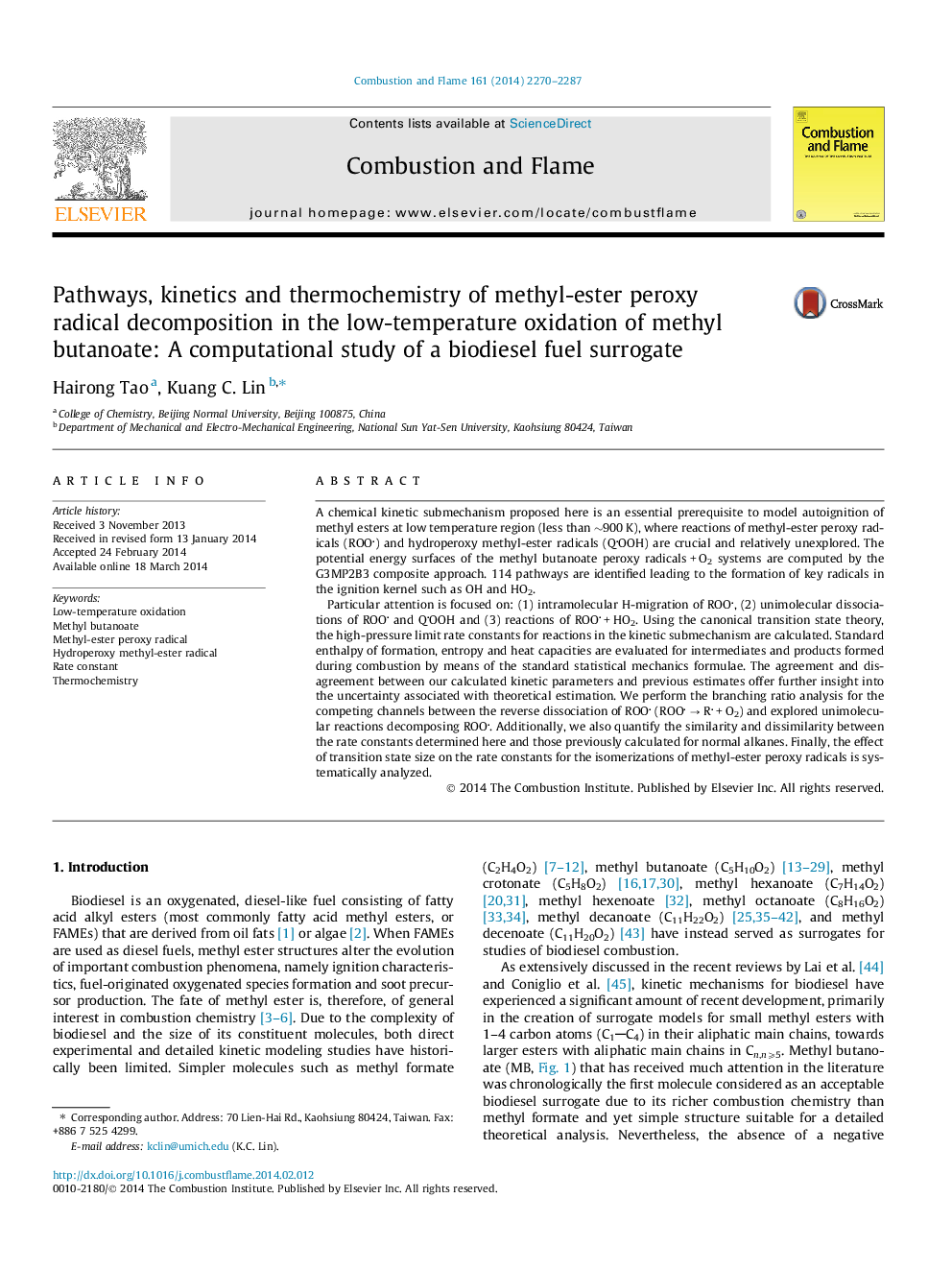| کد مقاله | کد نشریه | سال انتشار | مقاله انگلیسی | نسخه تمام متن |
|---|---|---|---|---|
| 168552 | 457938 | 2014 | 18 صفحه PDF | دانلود رایگان |
A chemical kinetic submechanism proposed here is an essential prerequisite to model autoignition of methyl esters at low temperature region (less than ∼900 K), where reactions of methyl-ester peroxy radicals (ROO) and hydroperoxy methyl-ester radicals (QOOH) are crucial and relatively unexplored. The potential energy surfaces of the methyl butanoate peroxy radicals + O2 systems are computed by the G3MP2B3 composite approach. 114 pathways are identified leading to the formation of key radicals in the ignition kernel such as OH and HO2.Particular attention is focused on: (1) intramolecular H-migration of ROO, (2) unimolecular dissociations of ROO and QOOH and (3) reactions of ROO + HO2. Using the canonical transition state theory, the high-pressure limit rate constants for reactions in the kinetic submechanism are calculated. Standard enthalpy of formation, entropy and heat capacities are evaluated for intermediates and products formed during combustion by means of the standard statistical mechanics formulae. The agreement and disagreement between our calculated kinetic parameters and previous estimates offer further insight into the uncertainty associated with theoretical estimation. We perform the branching ratio analysis for the competing channels between the reverse dissociation of ROO (ROO → R + O2) and explored unimolecular reactions decomposing ROO. Additionally, we also quantify the similarity and dissimilarity between the rate constants determined here and those previously calculated for normal alkanes. Finally, the effect of transition state size on the rate constants for the isomerizations of methyl-ester peroxy radicals is systematically analyzed.
Journal: Combustion and Flame - Volume 161, Issue 9, September 2014, Pages 2270–2287
